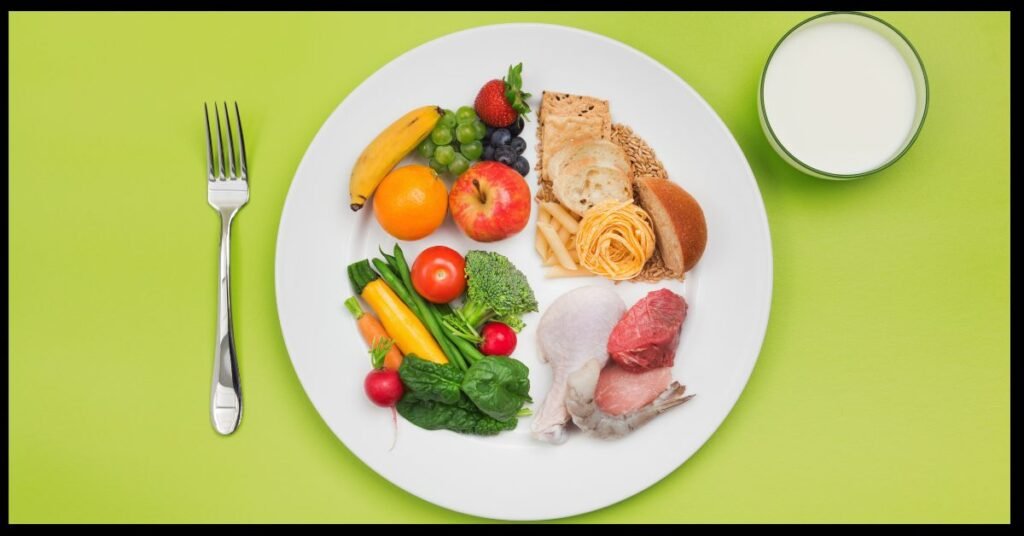In today’s world, it is crucial to teach children the value of developing good eating habits. For children’s overall health, it is essential to learn about nutrition. Furthermore, it is also important to know how to make wise food decisions given the prevalence of harmful food options.
In this blog, we will provide an overview of healthy and unhealthy food for kids. This comprehensive content aims to equip parents, educators, and individuals of all ages with the necessary knowledge to promote healthier dietary habits among children. Let’s delve into the world of nutrition and explore the best practices for ensuring a balanced diet for kids.
What means healthy foods?
Healthy food refers to nourishing options that provide essential nutrients for optimal growth and development. These nutrient-rich foods play a crucial role in children’s overall well-being. Including a variety of fruits, vegetables, whole grains, lean proteins, and dairy products in their diet ensures that kids receive the necessary vitamins, minerals, and antioxidants.

Consuming healthy food promotes healthy brain function, strengthens the immune system, supports bone health, and maintains a healthy weight. Colorful fruits and veggies, whole grain bread, lean meats, fish, low-fat dairy products, and legumes are a few examples of nutritious eating alternatives for children. By offering these nutritious choices, parents can help their children establish healthy eating habits and set them up for a lifetime of optimal health.
Benefits of Healthy Food for Kids
A healthy diet plays a crucial role in promoting overall well-being, especially for kids. Incorporating nutritious foods into their daily meals can yield numerous benefits for children of all ages.
- Firstly, consuming healthy food ensures improved physical health, as it provides essential nutrients for growth and development.
- Secondly, a balanced diet enhances cognitive function and academic performance, allowing children to reach their full potential. Additionally, a diet rich in nutritious foods strengthens the immune system, helping to ward off illnesses and infections.
- Lastly, healthy food provides children with increased energy levels, enabling them to stay active and engaged throughout the day. By prioritizing healthy eating habits, parents can set their kids on a path to long-term wellness.
Unhealthy Food and its Impact on Kids
Unhealthy food refers to food options that are low in nutritional value and high in added sugars, saturated fats, and sodium. These foods are often processed and lack essential vitamins, minerals, and fiber that are crucial for children’s growth and development. Regular unhealthy food intake can be harmful to children’s health. It contains a higher risk of type 2 diabetes, cardiovascular disease, obesity, and a weaker immune system.
Parents and other adults who provide care for children should be aware of popular unhealthy food selections. Including sugary cereals, processed snacks, quick meals, and sugary beverages. Additionally, parents should make an effort to minimize their kids’ consumption of certain items. Parents should encourage a balanced diet that includes a range of fresh fruits and vegetables, healthy grains, lean meats, and low-fat dairy products. It may help children’s overall health.
Teaching Kids about Healthy Eating
Teaching kids about healthy eating is crucial to ensuring their overall well-being. To promote healthy eating habits in youngsters, a number of efficient measures may be used. First, it is important to involve children in meal planning and preparation. They feel more in control of their eating choices because of this. However, it also offers a chance to educate them on the advantages of nutritious diets.
Additionally, parents or guardians should set a good example by making healthy food choices themselves. By modeling healthy eating habits, children are more likely to follow suit. It is essential to teach children the difference between healthy and unhealthy food options, empowering them to make informed decisions about their diet. With these strategies in place, children of all ages can develop a lifelong commitment to healthy eating.
What are healthy snack ideas for kids?
When it comes to providing nutritious and delicious snack options for kids of all ages, it’s important to focus on healthy choices that taste great. From easy-to-make recipes for healthy snacks to snack ideas for different occasions, we’ve got you covered. Our collection of snack ideas includes a variety of options that are both wholesome and satisfying.
Whether you’re looking for after-school treats or party snacks, we have something for everyone. Encourage your kids to make smart food choices by offering them these wholesome snacks that are not only delicious but also good for their overall health and well-being. Say goodbye to unhealthy food options and say hello to guilt-free snacking with our collection of healthy snack ideas for kids.
Promoting Healthy Food Choices Outside the Home
Promoting healthy food choices outside the home is crucial for individuals of all ages. Whether it’s navigating unhealthy food options at school or social events, finding strategies for making healthier choices when eating out, or dealing with food marketing targeted at children, there are steps we can take to ensure a more nutritious lifestyle. By being mindful of the unhealthy food options that may be present, individuals can make informed decisions and opt for healthier alternatives.

Additionally, understanding strategies for making healthier choices when dining out can help individuals make better food choices while still enjoying their meals. Lastly, addressing the issue of food marketing targeted at children is essential to promoting healthier habits from a young age. By being aware of these factors and adopting a professional approach to promoting healthy food choices, individuals can make positive changes in their lives and encourage others to do the same.
Frequently Asked Questions About Kids’ Nutrition
Frequently Asked Questions about Kids’ Nutrition Ensuring that children consume a healthy and balanced diet is crucial for their overall well-being. Here are some commonly asked questions related to healthy and unhealthy food for kids:
What should be included in a healthy diet for kids?
Children should eat a mixture of fruits, vegetables, healthy grains, and lean proteins. Moreover, they also eat low-fat dairy foods as part of a well-rounded diet. These provide the vital nutrients needed for development and growth.
How can I encourage my child to eat healthy?
Introduce healthy foods early on and offer them as regular options. Be a role model and eat nutritious meals together as a family. Engage children in meal planning and preparation to foster their interest in healthy eating.
Are snacks important for kids? What should I offer them?
Snacks play a vital role in providing energy and nutrients between meals. Opt for nutritious snacks like fresh fruits and vegetables with hummus, yogurt, or whole-grain crackers. Limit sugary and processed snacks.
Can kids have occasional treats or unhealthy foods?
While it’s essential to prioritize healthy choices, it’s alright for children to enjoy occasional treats in moderation. Teaching them about balanced eating is key to helping them make informed decisions.
What are some signs of unhealthy eating habits in kids?
Signs of unhealthy eating habits in children include excessive consumption of sugary drinks and snacks, a lack of interest in nutritious foods, weight fluctuations, and nutrient deficiencies. Consulting a healthcare professional can provide further guidance.
Remember, establishing healthy eating habits early on can lay the foundation for a lifetime of good health.
Conclusion
In conclusion, teaching kids about the importance of healthy eating habits is essential in today’s society. With the abundance of unhealthy food options available, it is crucial to educate children about nutrition and guide them to make informed food choices.
This comprehensive content has provided an in-depth overview of healthy and unhealthy food options for kids, equipping parents, educators, and individuals of all ages with the necessary knowledge to promote healthier dietary habits among children.
By incorporating a variety of fruits, vegetables, whole grains, and lean proteins into their diet, children can receive the essential nutrients needed for optimal growth and development. It is our responsibility to prioritize their well-being and ensure they have a balanced diet for a healthier future.



